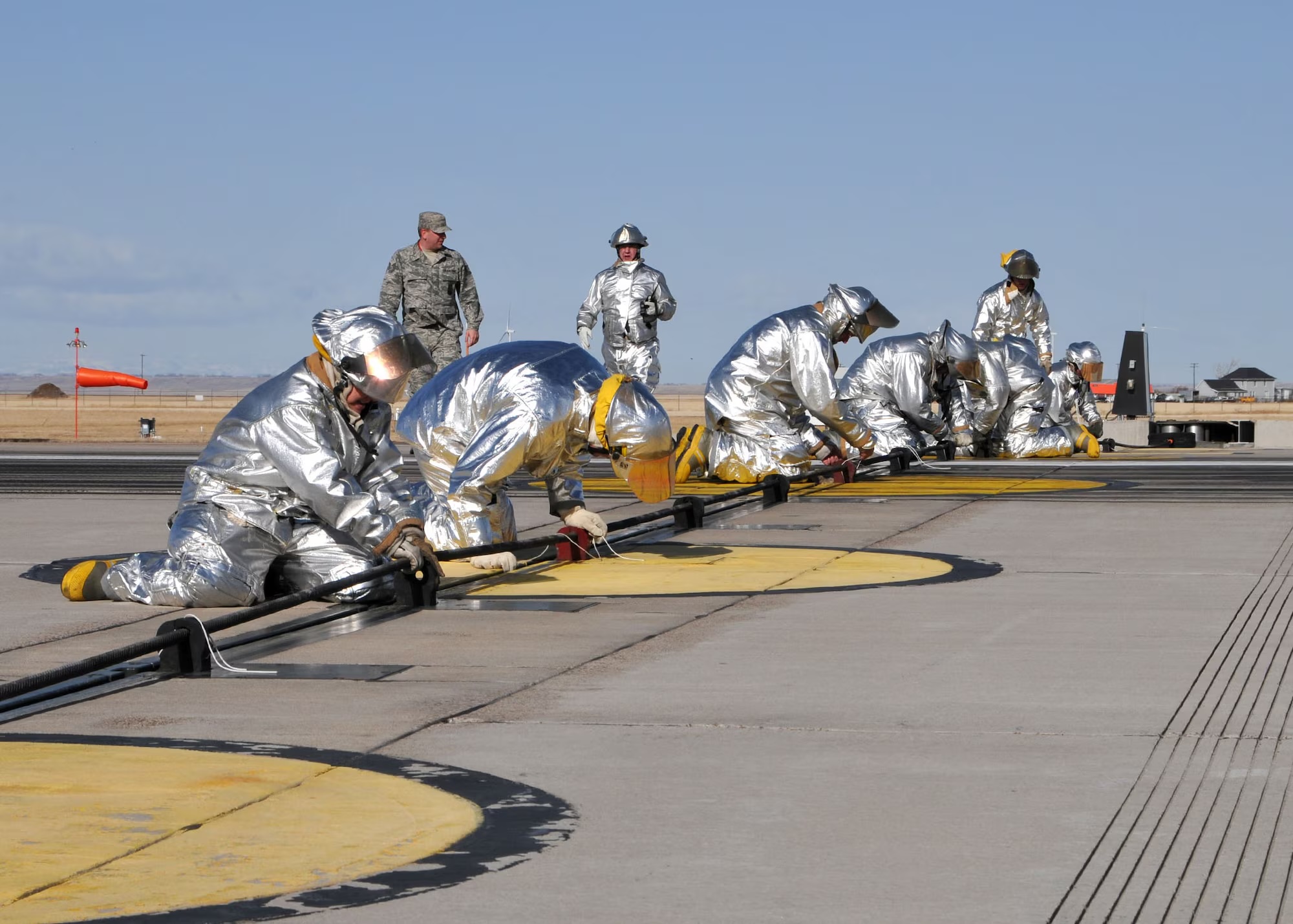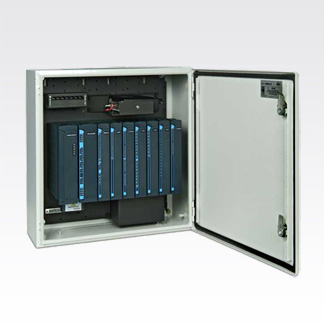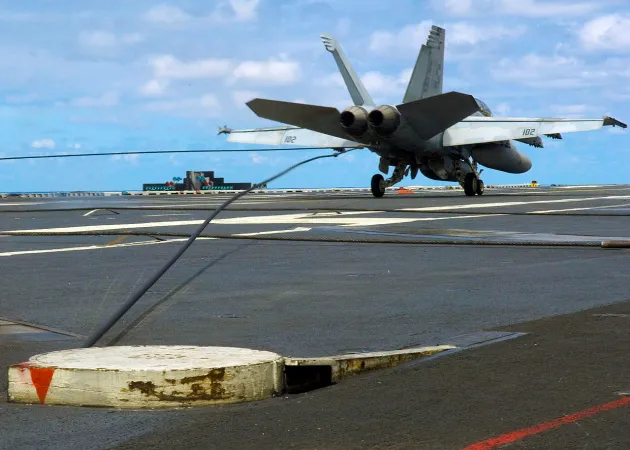A Century of Safety Innovation
Aircraft arresting systems represent one of aviation's most critical safety technologies, evolving from simple barriers to sophisticated computerized networks.
Aircraft arresting systems represent one of aviation's most critical safety technologies, evolving from simple barriers to sophisticated computerized networks that save lives and protect valuable assets. This comprehensive history traces the development of these essential systems from their naval origins to today's advanced installations.
From the wooden decks of early carriers to today's sophisticated airfields, aircraft arresting systems continue to stand as essential guardians of aviation safety, with each advancement increasing reliability, reducing maintenance requirements, and enhancing operational capabilities.

Historical Timeline
Key milestones in the development of aircraft arresting technology
1920s: Naval Origins
The concept of aircraft arresting began with naval aviation. In the early 1920s, as aircraft carriers became operational platforms, the need to safely stop aircraft on short decks became paramount. The first practical development of carrier arresting gear began on August 11, 1921, when Lieutenant Alfred M. Pride taxied an Aeromarine plane onto a dummy arresting system.
1927: First Standardized Systems
By 1927, both British and American navies were experimenting with improved designs. The USS Langley, America's first aircraft carrier, employed a system where "the arresting gear will consist of two or more transverse wires stretched across the fore and aft wires... leading around sheaves placed outboard to hydraulic brakes." This basic concept - a transverse cable connected to energy-absorbing devices - would become the foundation for all future arresting systems.
1950s: Korean War Innovations
The Korean War (1950-1953) marked a pivotal moment in aircraft arresting technology. Jet aircraft introduced during this period required longer runways and created new safety challenges. Even with extended runways, jets continued to experience accidents during takeoff and landing operations.
In 1955, the first documented land-based aircraft arrestment occurred, highlighted in The MATS Flyer magazine. The U.S. Air Force, drawing lessons from naval operations, tested an aircraft arresting barrier system similar to those used on carriers. The system adopted, designated MA-1A, consisted of retractable stanchions holding a barrier in position and a heavy anchor chain to decelerate aircraft upon engagement.
1961: BAK-9 Development
The breakthrough came from John Sherman Strance, a U.S. Navy engineer who had worked on shipboard arresting gears during World War II. In 1961, Strance patented the Model 200 BAK-9 rotary friction arresting gear system, which replaced chains as the energy absorber for the MA-1A to accommodate hook engagements.
1962: BAK-12 Introduction
This innovation was quickly followed by the BAK-12 system in 1962, which featured increased energy capacity to handle the demands of newer aircraft. The BAK-12 utilized two hydraulically actuated rotary friction energy absorbers - modified B-52 brakes - positioned on each side of the runway and connected by a cross-runway hook cable or net barrier.
The BAK-12 design was revolutionary. It employed a static pressure accumulator holding 175 pounds per square inch of pressure on the brakes. When an aircraft's pull exceeded this static pressure, the braking system switched to an integral hydraulic pump. As the aircraft slowed, the reels turned more slowly, reducing hydraulic pressure on the brake and preventing a dangerous "slingshot effect" at the end of the runout.
1970s-1980s: BAK-14 and BAK-15
As aircraft continued to evolve, so did arresting systems. The BAK-14, introduced as a companion to the BAK-12, provided a bidirectional hook cable support system that could be retracted below the runway surface when not in use, allowing normal operations without risk to taxiing aircraft.
The BAK-15 brought another innovation: electro-hydraulically powered steel masts supporting a unidirectional nylon net barrier, primarily designed for aircraft without tail hooks or as redundancy for hook-equipped aircraft.
1990s: Digital Control Systems
By the 1990s, digital control systems entered the picture. Motorola's MOSCAD-L SCADA/PLC remote-terminal units replaced hard-wired circuits that ran thousands of feet beside runways. These systems allowed controllers to monitor cable status, brake pressure, and safety parameters from the control tower, providing push-button capability to raise or lower cables without dispatching ground crews.
2000s: ACE3600 and PAACS
The mid-2000s saw the introduction of Motorola's ACE3600 and the Phoenix Aircraft Arresting Control System (PAACS), which brought sophisticated digital monitoring, control, and data logging capabilities to arresting system operations. These systems could store thousands of event records for accident reconstruction and supported remote firmware updates with military-grade encryption.
Present Day: Advanced Integration
Today's aircraft arresting systems represent the culmination of a century of engineering evolution. Modern installations feature sensor networks, advanced materials, and specialized hydraulic systems that provide real-time monitoring of tension, speed, and runway conditions.
The BAK-12 remains the standard USAF aircraft arresting system, with ongoing improvements to meet the demands of increasingly sophisticated aircraft. Mobile Aircraft Arresting Systems (MAAS) now allow for rapid deployment anywhere in the world, with installation possible in as little as two hours.
Future Directions
Future developments point toward AI-based video analytics that can automatically arm barriers when aircraft declare emergencies, enhanced integration with digital tower systems, and continued improvements in materials and energy management technologies.
Throughout this evolution, the fundamental purpose has remained unchanged: providing pilots with a reliable safety system that can bring aircraft to a controlled stop during emergencies, saving lives and protecting valuable assets.
Transition to Land-Based Systems
Adapting naval technology for airfield operations
During the first 6 months of operation, the MA-1A recorded 36 successful engagements with minimal aircraft damage. However, as heavier and faster aircraft entered service, the limitations of chain-based deceleration became apparent, driving the need for more advanced solutions.
The transition from naval to land-based arresting systems represented a significant engineering challenge. While the fundamental principles remained the same, the operational context differed dramatically. Land-based systems needed to accommodate a wider variety of aircraft, function in diverse environmental conditions, and integrate with existing airfield infrastructure.
This period of adaptation and innovation laid the groundwork for the modern arresting systems that would follow, establishing design principles and operational requirements that continue to influence today's technology.

The Modern Era
Digital integration and advanced control systems

The introduction of digital control systems in the 1990s marked a revolutionary advancement in aircraft arresting technology. Motorola's MOSCAD-L systems eliminated thousands of feet of hard-wired circuits, replacing them with wireless communication networks that enhanced reliability and reduced maintenance requirements.
This digital transformation continued with the ACE3600 and PAACS in the mid-2000s, bringing unprecedented capabilities for monitoring, control, and data analysis. These systems not only improved operational efficiency but also enhanced safety through continuous monitoring and rapid response capabilities.
Today's integrated systems represent the culmination of a century of innovation, combining mechanical reliability with digital precision to create safety infrastructure that pilots and airfield operators can trust in the most critical moments.
Learn About Motorola IntegrationHistorical References
Sources and further reading on aircraft arresting history
- Barrett Tillman, "History of the Arresting System For Naval Aircraft," On Wave and Wing: The 100 Year Quest to Perfect the Aircraft Carrier
- U.S. Air Force, "Arresting system stops aircraft safely," April 4, 2006
- The Mobility Forum, "Chain Reaction: The Barrier Between Life and Death," September 2, 2021
- Federal Aviation Administration, "Advisory Circular 150/5220-9B, Aircraft Arresting Systems on Civil Airports," July 10, 2023
- Global Data Specialists, "Evolution of Aircraft Arresting," January 30, 2025
- Curtiss-Wright EMS, "Cable Arresting Systems"
Expert Support and Integration
As an authorized Motorola SCADA integrator with decades of experience, Global Data Specialists provides comprehensive support for aircraft arresting control systems.
Contact Global Data Specialists
